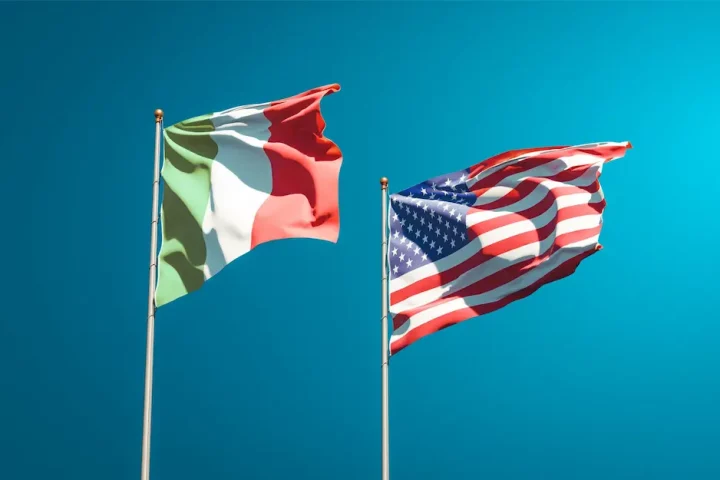As of 2025, with the enactment of Law No. 74/2025, Italian consulates and municipalities have ceased accepting applications for citizenship by descent. All administrative procedures are set to be centralized under a newly established governmental body; however, its structure, operational framework, and specific guidelines are still pending.
As a result, all existing consular and communal queues were formally dissolved, leaving judicial proceedings as the only available pathway to obtaining Italian citizenship.
Applicants who intend to challenge the new requirements for Italian citizenship imposed by Law 74/2025 are strongly advised to retain documentation—such as a receipt or proof of their original place in line at a consulate—as part of their legal strategy.
It is important to emphasize that the outcome of these legal challenges remains uncertain, as Italian courts continue to evaluate the constitutionality and retroactive implications of the law.
When considering obtaining Italian citizenship, there are two primary routes: applying through the Italian consulates in the USA vs. Italy, applying directly in the country. Each method has its own set of advantages and challenges. Here, we will explore the key differences between these two approaches.
Processing time
In Italy: applying for Italian citizenship directly, especially through jus sanguinis (right of blood), can be significantly faster. The process can be completed within a few months, provided all documents are in order. However, this speed comes at a cost, as the process is often more expensive. The efficiency of the process in Italy is largely due to the direct interaction with local authorities, without the need to wait in long queues.
In the USA: when applying through the Italian consulates in the United States, the process can be considerably longer, taking anywhere from 1 to 4 years. The duration depends on the workload of the specific consulate and the complexity of the case. The extended timeline is often due to the high volume of applications and the need for thorough document verification and validation by consular staff.
Residency requirements
In Italy: those seeking citizenship by residency (naturalization) must reside in the country for at least 10 years. This residency requirement ensures that applicants are well-integrated into Italian society and familiar with its culture and language.
In the USA: if you are going to apply for Italian citizenship by descent, there is no need to reside in Italy, you can apply at a consulate. Applicants can choose the consulate of their jurisdiction, or hire specialized assistance. One key difference is that if applying directly in Italy, all beneficiaries must reside together in Italy. In contrast, when applying from the USA, each participant can live anywhere in the world, making it a more flexible option for families spread across different locations.
Take advantage of specialized assistance to secure your passport for a borderless future.
Documentation complexity
In Italy: while the documentation requirements are the same regardless of where you apply, being in Italy can provide easier access to local sources for old Italian documents. However, the language barrier, and the challenge of navigating local offices can make the process more exhausting. Any delays or difficulties in obtaining documents can increase the overall cost and time required.
In the USA: applying through the consulates in the USA involves submitting all necessary documents to the competent Italian consulate. There is a risk of delays if any document is deemed inadequate or requires additional corrections or validations. It is vital to ensure that all documentation is accurate and complete to avoid prolonged processing times.
Costs
In Italy: the cost of obtaining Italian citizenship in Italy can vary widely. Expenses include notary fees, legal fees for lawyers who specialize in Italian citizenship, translation, authentication of documents, and living expenses such as accommodation and food. Additionally, all payments must be made in Euros, and currency exchange rates can further increase costs. The overall expense can be substantial, especially considering the need for extended stays in Italy.
In the USA: costs in the USA are generally more predictable, with specific and often standardized fees. These fees are usually in the local currency, making it easier to manage expenses. While legal and other professional services can add to the total cost, many service providers offer installment plans, lower fees, discounts, or currency conversion options, making the financial aspect more manageable.
Understanding italian citizenship assistance cost: what you need to know.
Language requirements
In Italy: there is no formal language exam for obtaining Italian citizenship, except in cases of Italian citizenship by residency or marriage, where a basic knowledge of Italian (B1 level) is required. However, having at least a basic understanding of Italian can be immensely helpful in navigating the bureaucratic process and daily interactions.
Italian citizenship test: Tips and information to achieve this prerequisite for Italian citizenship
In the USA: applicants can complete the entire process in their local language, which can simplify communication and reduce the stress associated with language barriers. This is particularly advantageous for those who are not fluent in Italian.
Process experience in the USA vs. Italy
In Italy: the process in Italy is often more direct, with fewer intermediaries and direct communication with local authorities. This can streamline the process and reduce the likelihood of miscommunication or delays. Additionally, being in Italy offers the opportunity of immersing yourself in Italian culture, allowing applicants to experience Italian life firsthand.
In the USA: the process in the USA can be more bureaucratic, involving lengthy appointments and communication that depends on the consulate. The physical distance from Italy can make the process feel more complex and distant. However, the familiarity of dealing with local consulates and the ability to communicate in your own native language can offset some of these challenges.
Assistance options
In Italy and the USA: regardless of where you apply, there are specialized companies, such as io.citizen, that can handle the entire process on your behalf. These companies offer comprehensive services, including document preparation, legal assistance, and communication with authorities, ensuring a smoother and less stressful experience.
Utilizing such services can be particularly beneficial for those unfamiliar with the intricacies of the application process or those who prefer a hands-off approach.
In conclusion, both routes to obtaining Italian citizenship have their unique advantages and challenges. Applying directly in Italy can be faster and more immersive but comes with higher costs.
On the other hand, applying through the consulates in the USA offers more flexibility and predictability in costs but can be a longer and more bureaucratic process. Understanding these differences can help applicants make an informed decision based on their specific circumstances and preferences.
Take advantage of specialized assistance to secure your passport for a borderless future.






